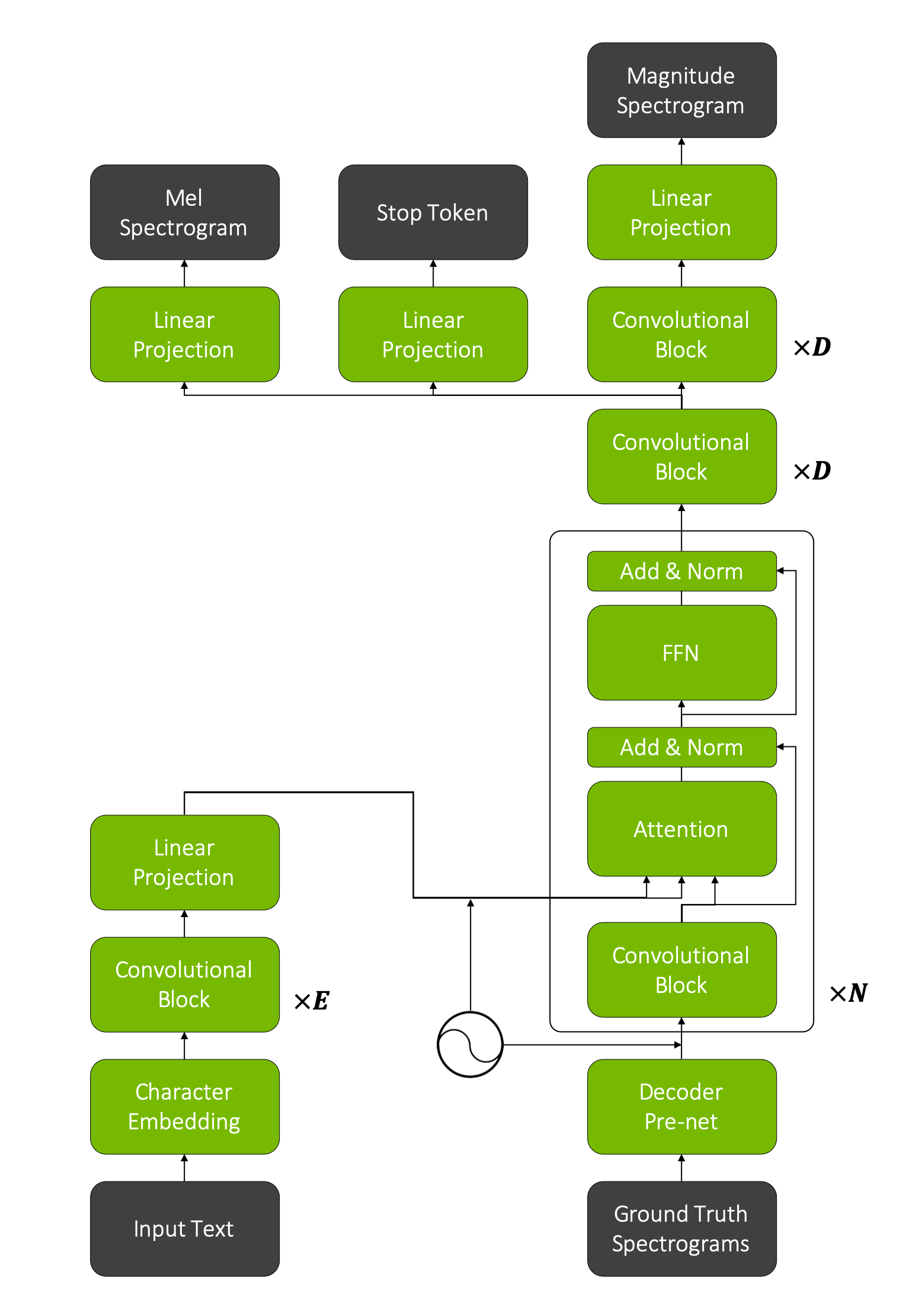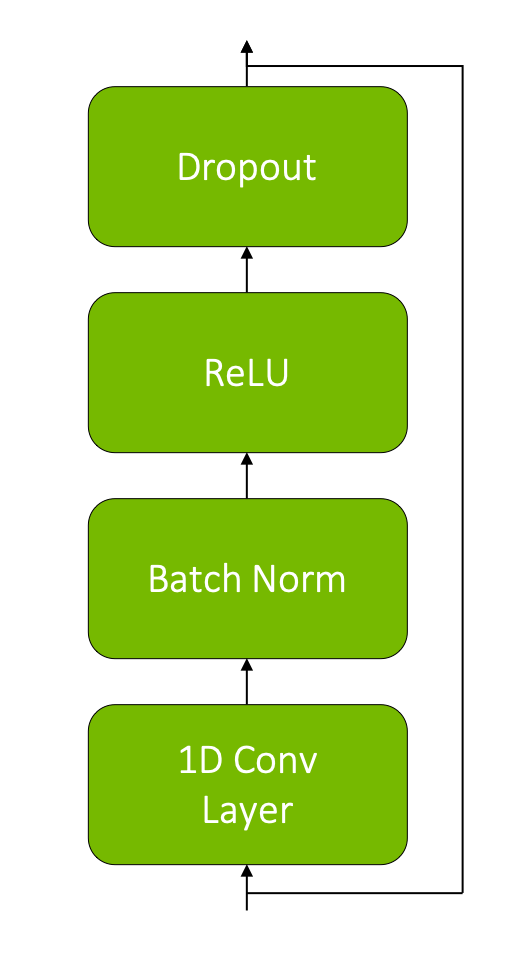Centaur¶
Model¶
Centaur is our hand-designed encoder-decoder model based on the Neural Speech Synthesis with Transformer Network and Deep Voice 3 papers.
Encoder¶
The encoder architecture is simple. It consists of an embedding layer and a few convolutional blocks followed by a linear projection.
Each convolution block is represented by a convolutional layer followed by batch normalization and ReLU with dropout and residual connection:
Decoder¶
The decoder architecture is more complicated. It is comprised of a pre-net, attention blocks, convolutional blocks, and linear projections.
The pre-net is represented by 2 fully connected layers with ReLU activation and a final linear projection.
The attention block is similar to the transformer block described in the Attention Is All You Need paper, but the self-attention mechanism was replaced with our convolutional block and a single attention head is used. The aim of Centaur’s attention block is to learn proper monotonic encoder-decoder attention. Also we should mention here that we add positional encoding to encoder and pre-net outputs without any trainable weights.
The next few convolutional blocks followed by two linear projections predict the mel spectogram and the stop token. Additional convolutional blocks with linear projection are used to predict the final magnitude spectogram, which is used by the Griffin-Lim algorithm to generate speech.
Loss¶
We use L1 norm to penalize mel and magnitude spectogram predictions. Because we do not use mel spectograms to generate speech, one can consider it as an auxiliary loss. Cross entropy loss is used for stop token predictions.
Training¶
The model is trained with NovoGrad with an initial learning rate of 1e-2 with a polynomial decay. Also L2 regularization was used during the training.
Tips and Tricks¶
One of the most important tasks of the model is to learn a smooth monotonic attention. If the alignment is poor, the model can skip or repeat words, which is undesirable. We can help the model achieve this goal using two tricks. The first one is to use a reduction factor, which means to predict multiple frames per time step. The smaller this number is, the better the voice quality will be. However, monotonic attention will be more difficult to learn. In our experiments we generate 2 audio frames per step. The second trick is to force monotonic attention during inference using a fixed size window.

